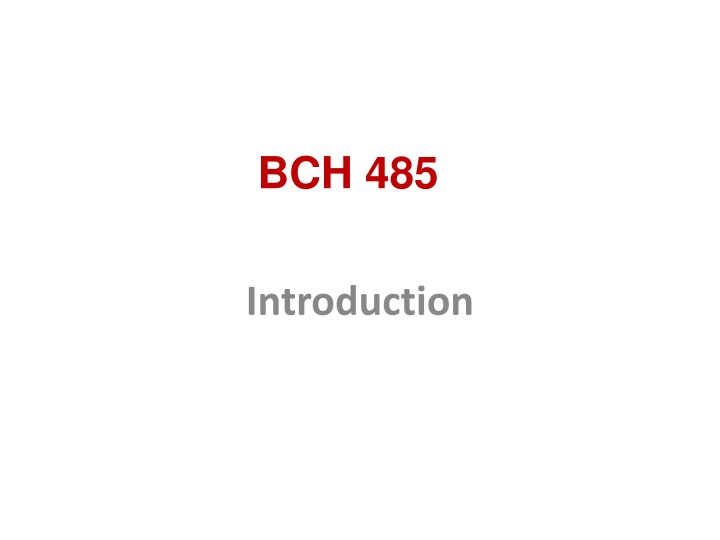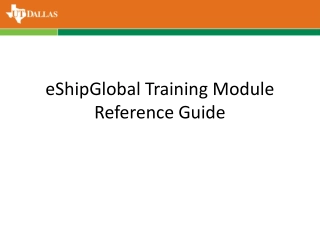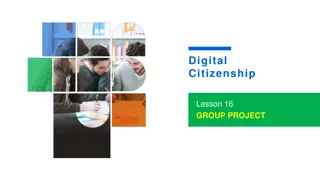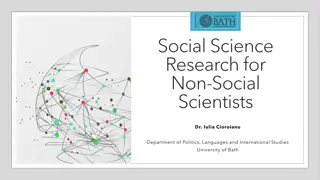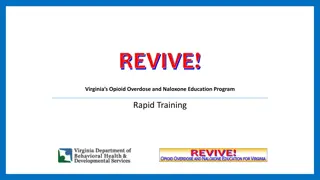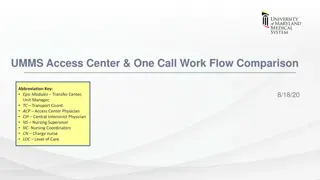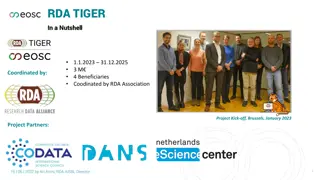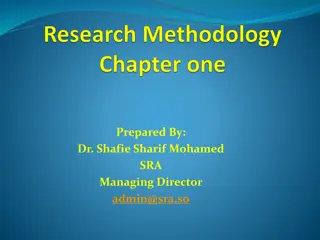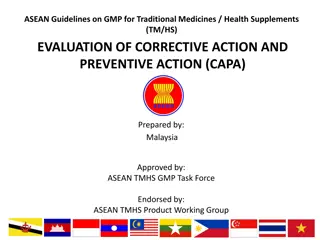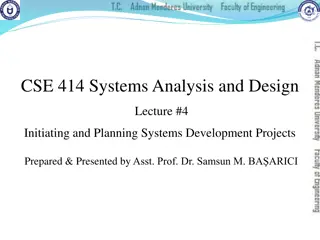Initiating Research: Importance, Steps, and Topics Covered
This course on initiating research emphasizes the importance of time management and guides students on selecting research topics, collecting data, and presenting their findings. Covering essential topics like writing CVs, statistical analysis with SPSS, ethics in research, and more, it equips students with valuable skills for their academic and professional pursuits.
Download Presentation

Please find below an Image/Link to download the presentation.
The content on the website is provided AS IS for your information and personal use only. It may not be sold, licensed, or shared on other websites without obtaining consent from the author.If you encounter any issues during the download, it is possible that the publisher has removed the file from their server.
You are allowed to download the files provided on this website for personal or commercial use, subject to the condition that they are used lawfully. All files are the property of their respective owners.
The content on the website is provided AS IS for your information and personal use only. It may not be sold, licensed, or shared on other websites without obtaining consent from the author.
E N D
Presentation Transcript
BCH 485 Introduction
Contact details Room 290, Floor 3, Building 5 Email: moalonazi@ksu.edu.sa
Significance of the course Every student needs the ability to conduct independent research-starting from selection of the research topic to the final report (thesis or manuscript). This course will cover basic topics required to initiate research. It will start from emphasising the importance of time. The different topics covered in course will be outlined.
Research "Research is a process of steps used to collect and analyze information to increase our understanding of a topic or issue". It consists of three steps: i- Pose a question----select a research topic ii- Collect data to answer the question iii- Present an answer to the question
Course Outline Topics Mark Week s distribution 10 How to write your first CV How to choose a topic for research Statistical analysis using SPSS: Introduction to SPSS. Window based statistical program How to write a lab report and discuss your data How to write references: Use endnote for citing references: The topic will cover using the traditional methods of citing reference and the advantages of using endnote program. How to design and present a poster How to make a slide presentation Ethics of scientific research How to write email Conducting literature search and use of the internet 1 10 10 1 20 1 10 1 10 1 10 10 10 1 0
This lecture We will talk about each of the topics listed in the table very briefly- to give you an overview of the course: So that you realize the importance of this course. So you realize that if you learn the different methodologies we will teach you in this course, you will benefit tremendously, not only when conducting BCH 497 research, but also when you study for your higher degree or work in a lab. In this course we will cover the following:
How to choose a topic for research Research topic how to choose it? https://encrypted-tbn0.gstatic.com/images?q=tbn:ANd9GcQ2owF1ohRTC23lWEDoyoUW9n217-mr-fgd_HwG87U3_pQFsVh5Uv3d_j0 https://encrypted-tbn2.gstatic.com/images?q=tbn:ANd9GcTxryyTMwdU_W4puPHegLad9Yx_714n_K9cItrnafY9x1-gz52ZOEUOdeCO
Literature search How to conducting literature search? Using the internet to collect references. Using books https://encrypted-tbn1.gstatic.com/images?q=tbn:ANd9GcTgyFwWnTSPYLJoz4wXTKJtcYFDXygKZDbjGg22_QDUZP8vHL7OYURZuQ https://encrypted-tbn0.gstatic.com/images?q=tbn:ANd9GcSp813VYShTXoxMH2Gn4aXmIjZzOd9gIZ7YDsGef3_Q54cPnxn6L302GRo
https://encrypted-tbn0.gstatic.com/images?q=tbn:ANd9GcQm2OAdhL1UD-v6tPROVofPyN5ghbArfLt_s54jipAKaiOb86kLny6zscrNhttps://encrypted-tbn0.gstatic.com/images?q=tbn:ANd9GcQm2OAdhL1UD-v6tPROVofPyN5ghbArfLt_s54jipAKaiOb86kLny6zscrN Ethics of scientific research Ethics what is it? What ethical conduct is essential to conduct scientific research? Why should we follow ethics? https://encrypted-tbn1.gstatic.com/images?q=tbn:ANd9GcThlTulS396dDZmCmPRJ0nv2W6pKoUe9pKvtcgM1EFeI104s5V202nlQAg https://encrypted-tbn0.gstatic.com/images?q=tbn:ANd9GcQSAY58_y36sYP-4pdLQLKGB8gdPT3LudZMf7Yk8PtCPOnXRLaswzMAAHwX
References How to write references: manually and using End-note https://encrypted-tbn2.gstatic.com/images?q=tbn:ANd9GcSvx7YZX5GYSc5ZNz5NYl5Tv-BkrF_1cApPZ5lBQ0g2htQ4LwJDi4CCpxUz
Writing a Lab Report How to write a meaning full lab report and discuss your data? flickr:3323630357
Poster What is a poster? How to design and present a poster https://encrypted-tbn1.gstatic.com/images?q=tbn:ANd9GcQFvTZdtVZ6JVn7XwKqI5m2BabBSq6DNUtIH1EAzdotRpys1IoAdBzM87Y
Slide presentation What is the importance of a slide presentation? How to make an effective slide presentation? https://encrypted-tbn3.gstatic.com/images?q=tbn:ANd9GcSTwQaUn2Cx4Id7GDoiUkD8Rc8BynOfjfe8U1ljlitOprDb4rhuhnlN7G4 https://encrypted-tbn0.gstatic.com/images?q=tbn:ANd9GcTvQeQS1Z4bg_dUELf5k4NlGJXmvq9_mwFSxjPk_F0FL-_Q21mgfaiDp-P2
Curriculum vitae C.V? What is it? How to write your first CV
Some Important points for you Safety in lab Importance of keeping a log book
Safe Laboratory Practices & Procedures It is essential to take precautions to protect yourself and others from Laboratory hazards.
What are the hazards in the Lab?" Common hazards in the laboratory include: blood, animal, biological, chemical, physical, and radiological. Protect yourself from hazards: Take special care when working with blood Wear gloves Do not pipette by mouth If there is an accident or emergency situation involving these hazards seek immediate assistance. If you are splashed by any harmful materials, use running water from an eyewash station or emergency shower for at least 15 minutes or until emergency assistance arrives and provides you with different instructions. Report to your supervisor any accident, injury, or uncontrolled release of potentially hazardous materials - no matter how trivial the accident, injury, or release may appear.
Prevent potential exposure Conduct yourself in a responsible and professional manner at all times. No practical jokes. Dress for work in the laboratory. Wear lab coat Wear clothing and shoes that cover exposed skin and protect you from potential splashes. Tie back long hair, jewelry, or anything that may catch in equipment. Never eat food, drink beverages, chew gum, apply cosmetics (including lip balm), or handle contact lenses in the laboratory. Use a chemical fume hood or biosafety cabinet, as directed by your supervisor. Report damaged electrical equipment to the supervisor. Do not use damaged electrical equipment. Do not leave active experiments unattended. Never leave anything that is being heated or is visibly reacting unattended.
Protect yourself, others, your research, and the environment Practice good personal hygiene. Wash your hands after removing gloves, before leaving the laboratory, and after handling a potentially hazardous material. While working in the laboratory, wear personal protective equipment - eye protection, gloves, laboratory coat - as directed by your supervisor. Properly segregate and dispose of all laboratory waste.
Be prepared Read all procedures and associated safety information prior to the start of an experiment. Follow all written and verbal instructions. Ask for assistance if you need guidance or help. Work under direct supervision at all times. Never work alone in the laboratory. Know the locations and operating procedures for all safety equipment. This includes the eyewash station and safety shower. Know the locations of the nearest fire alarms. Never use an elevator in emergencies. Be alert and proceed with caution at all times in the laboratory. Immediately notify the supervisor of any unsafe conditions. Know the proper emergency response procedures for accidents or injuries in the laboratory
Log book Date https://encrypted-tbn0.gstatic.com/images?q=tbn:ANd9GcSC2tbD4Gl_g_AtXVlL42Ybv7PFe3fzYYx7EqpkE-i3wxkj4rGy2SKno24R Time https://encrypted-tbn2.gstatic.com/images?q=tbn:ANd9GcTZOIy2fLFxd75kEH7foC6VS-_LbrE1yPaTBcsPiyAIAIhXUGGVsBjNtvY Activity
